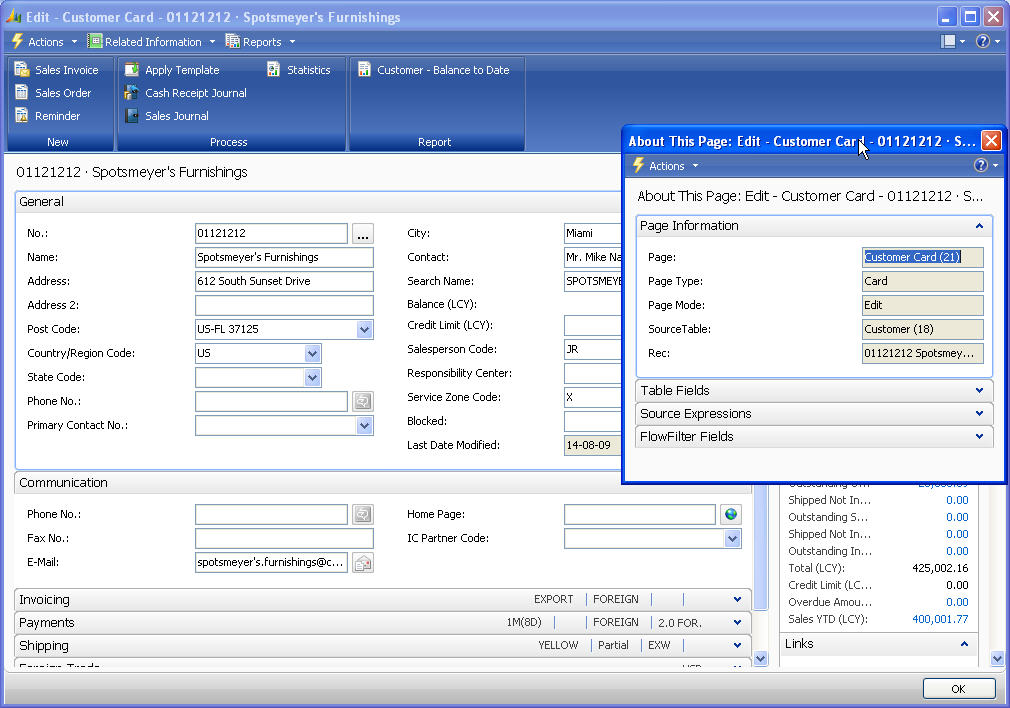In previous versions, all local client settings are stored in the .zup file. In Microsoft Dynamics NAV 2009, this is a bit more complex. This post tries to describe which settings are stored where.
In addition to that, with NAV 2009 you may be spending a lot of time looking for files with long folder-names. So this post also shows you the location of each file, to make it quicker to find them.
/// Blog updated October 2nd: Section “temporary server files” updated with path for Windows Server 2003.
Your current service plan does not allow access to this information. To learn more about Microsoft Dynamics Service Plans review our service plan offerings.


Setup files and tables in NAV 2009
In NAV 2009, settings are stored in various places. The following lists what is stored where. some settings are stored in files, and some in tables. I hope I have included everything here. But if the list should be incomplete, I would appreciate comments at the end of this post.
Client side:
- Download Microsoft Dynamics NAV 2009 R2. Mar 2, 2018 - Microsoft Dynamics NAV 2018 has been release with many new features in Enterprise Functionality for Small to Mid Sized Wholesale. Microsoft.Dynamics.NAV.2017.ISO-TBE Torrent Download Locations Click the yellow ' Download ' button on the right to download the.torrent files directly from the.
- Language Modules for Microsoft Dynamics NAV 2009 R2. Microsoft Dynamics NAV 2013 R2: Download Page: Microsoft Dynamics NAV 2013 R2: Download Page: https://mbs.
- Microsoft Dynamics NAV 2009 Developer Tools assist in developing, upgrading, and managing Microsoft Dynamics NAV 2009. The tools are aimed at supporting Microsoft Dynamics NAV 2009 NAV Server.
PersonalizationStore.xml
stored in:
%AppData%MicrosoftMicrosoft Dynamics NAV
This file stores some personal settings for the client like resizing of columns. It is probably the closest thing to the old zup file there is. The data in this file is primarily binary because it it not supposed to be updated manually. Even if you could edit the file (if you could find the settings you wanted to edit), then this is unsupported. But, like the old zup file, you can delete or rename it, and next time the client opens, it will create a new one.
ClientUserSettings.Config
Stored in:
%ProgramData%MicrosoftMicrosoft Dynamics NAV
This file is where you can set RTC to connect to a specific service tier and/or a specific port.
Server side:
CustomSettings.config
stored in (default):
C:Program FilesMicrosoft Dynamics NAV60Service
This is where you set up parameters for the Service Tier like SQL Server name, Database name, port number etc.

temporary Server files
Stored in:
%ProgramData%MicrosoftMicrosoft Dynamics NAV60Server
Microsoft Dynamics Nav 2009 R2 Download Crack Version
/// Update
Microsoft Dynamics Nav 2009
The path above is for a Vista OS. If you run NAV server on Windows Server 2003, the path is:
C:Documents and SettingsAll UsersApplication DataMicrosoftMicrosoft Dynamics NAV60Server
/// —–
The service tier uses this folder for various temporary files. It is definitely not recommended to change any files here! But it might be a place for troubleshooting certain problems (though I am not sure what kind of problems).
Tables:
2000000075 – “User Metadata”
When you go to “Customize this page”, then it’s stored here.If for example a user ads new parts, like a chart or does anythign else herel,this table contains one record for each urse, for ach pae that they have persinalised.

2000000071 – “Object Metadata”
This table stores all the objects for RTC. Whenever you compile an object, it transforms it to a format that is designed for RTC and stores it in this table. You can delete entries here, though I would not recommend it. But if you do, and want it back, then compile the missing object from Object Designer. The data in this table is generally binary, so also not something to modify and definitely not necessarily supported or documented.
Lars Lohndorf-Larsen (Lohndorf )
Microsoft Dynamics UK
Microsoft Customer Service and Support (CSS) EMEA